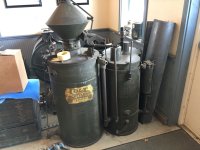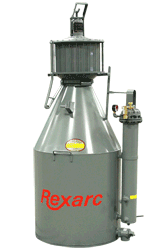Scottl
Diamond
- Joined
- Nov 3, 2013
- Location
- Eastern Massachusetts, USA
I still have a small carbide lamp I bought used for about five bucks. I used to use it to blacken front sights until I discovered Birchwood Casey Sight Black, much cleaner and easier to deal with.
Still have a couple of Coleman gasoline lamps I fitted with rotary flint ignitors so no more matches needed. I also have a couple of propane lamps and one Aladdin aluminum model I gave a guy ten bucks for. These days mantles cost more than I paid for the lamp! Always good to have non-electric stuff and the Colemans can go outside if needed during a power failure.
Mention was made of washing up with a basin. During a few days while the water heater was drying out after a flood before being re-lit we used a tea kettle on the gas stove to heat water in plastic dishpans. Managed to wash and shampoo hair just fine using camper's rinseless wash and shampoo, which we lightly rinsed.
Still have a couple of Coleman gasoline lamps I fitted with rotary flint ignitors so no more matches needed. I also have a couple of propane lamps and one Aladdin aluminum model I gave a guy ten bucks for. These days mantles cost more than I paid for the lamp! Always good to have non-electric stuff and the Colemans can go outside if needed during a power failure.
Mention was made of washing up with a basin. During a few days while the water heater was drying out after a flood before being re-lit we used a tea kettle on the gas stove to heat water in plastic dishpans. Managed to wash and shampoo hair just fine using camper's rinseless wash and shampoo, which we lightly rinsed.










